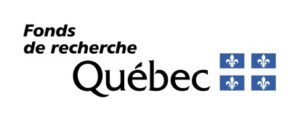Anaïs REMILI

McGill University
Postdoctoral fellow candidate
Supervisor: Melissa McKinney
Robert J. Letcher
Start: 2024-01-01
End: 2024-06-01
Personal page
Postdoctoral fellow candidate
Supervisor: Melissa McKinney
Robert J. Letcher
Start: 2024-01-01
End: 2024-06-01
Personal page
Project
Investigating the diet of critically endangered southern resident killer whales using quantitative fatty acid signature analysisLimited prey availability, vessel traffic and chemical pollution are considered major threats to Southern Resident Killer Whales (SRKWs), and ongoing research clarifying these threats can improve conservation actions. SRKWs mainly consume salmon, particularly Chinook salmon (Oncorhynchus tshawytscha), at least in summer, when they feed in the inland waters of Washington State and British Columbia. But their diet during other seasons and in outside waters is poorly understood. Furthermore, it is important not only to identify the prey species consumed, but also to understand their relative importance in the SRKW diet. Although preliminary estimates have been provided by this recent genetic study, diet composition from prey DNA provides only a snapshot of the diet and remains, at best, semi-quantitative. To refine SRKW diet estimates, we propose to use the QFASA method, which we recently validated for killer whales. Briefly, the proportion of each prey species contributing to the SRKW diet is estimated by statistically comparing the fatty acid signatures of predators and potential prey species, and including calibration coefficients to account for the modification of fatty acids by predator metabolism. The overall aim of our study is to produce quantitative estimates of time-integrated SRKW diets. The results will provide not only a snapshot of their diets, but also diet estimates over longer periods since QFASA represents a feeding period of several weeks to several months using marine mammal blubber.

